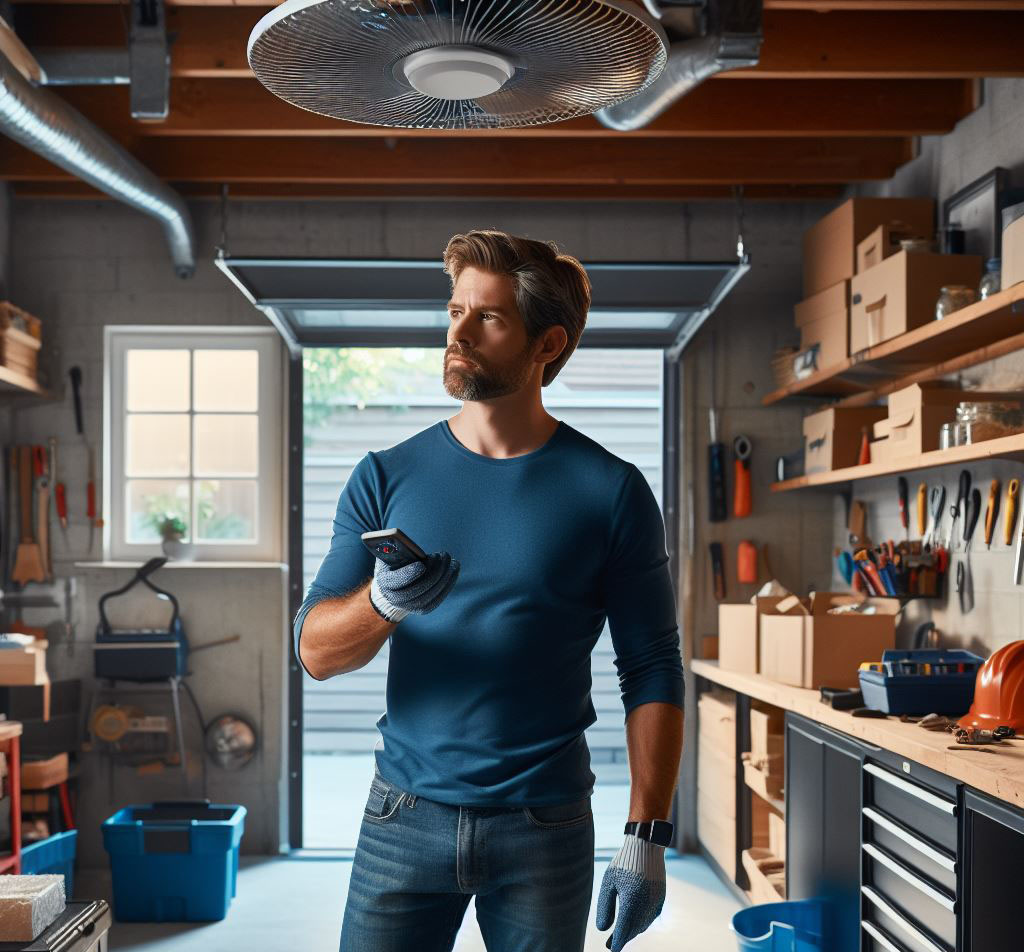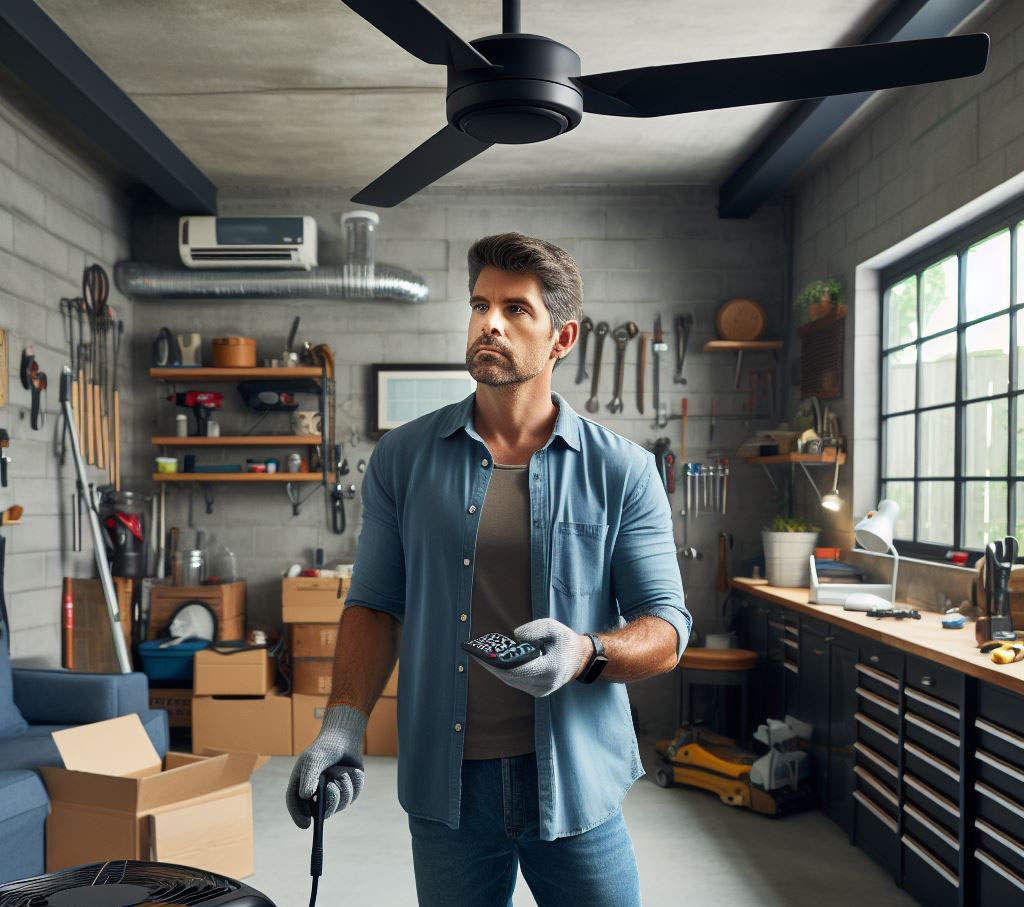Embarking on the task of keeping your garage cool, especially during those sweltering summer months, is a practical endeavor that transcends mere comfort. It’s about creating a functional space where you can work or store items without battling oppressive heat. This guide is tailored for a diverse group, from the DIY hobbyist tinkering on the weekends to the professional builder who values a well-maintained workspace.

Understanding Your Garage’s Cooling Needs
The first step in crafting a cool garage is understanding the root causes of heat accumulation. The primary culprits often include:
- Inadequate Insulation: Unlike the more climate-controlled interior of a home, garages often lack sufficient insulation, allowing heat to seep in and get trapped.
- Direct Sunlight: Garages that bask in the sun for the better part of the day inevitably absorb heat, contributing to higher internal temperatures.
- Limited Ventilation: Without proper airflow, your garage can quickly become a hotbox, retaining heat with no escape route.
Assessing your garage’s specific needs involves a careful consideration of its size, how you use it (as a storage unit, workshop, etc.), and the climatic conditions of your region. This tailored approach ensures that the solutions you implement are both effective and efficient.
Cooling Solutions for Your Garage
Ventilation Improvements
Enhancing ventilation in your garage is akin to opening the lungs of your space, allowing it to breathe and release pent-up heat. Here’s how you can improve the ventilation:
- Install Exhaust Fans: Position these fans high up, as hot air naturally rises. They work by actively expelling hot air outside, thereby aiding in temperature regulation.
- Add Vents: There are various types of vents to consider, including soffit vents, gable vents, and turbine vents. The right combination can facilitate a consistent and natural airflow through your garage.
- Strategic Window Use: If your garage has windows, they can be an asset in your cooling strategy. Opening them during cooler parts of the day can help flush out hot air and draw in cooler air.
Implementing these strategies requires a thoughtful approach. Consider the air flow dynamics of your space, the positioning of vents and fans, and the external environmental factors. Properly executed, these steps will not only reduce the heat in your garage but also transform it into a more pleasant and usable space. Remember, effective cooling is not just about installing equipment, it’s about understanding and harnessing the principles of air movement and temperature control to create a more comfortable environment in your garage.

Insulation Techniques
Insulating your garage is akin to fortifying it against the relentless heat. It’s an investment that pays off by maintaining a cooler environment within. Here’s how you can effectively insulate:
- Walls and Ceilings: Consider fiberglass batts or rigid foam boards. For a more comprehensive approach, spray foam offers superior coverage but at a higher cost. The key is to achieve a balance between insulation thickness and cost-effectiveness.
- Garage Doors: These large surfaces can be significant sources of heat transfer. Using foam board insulation kits tailored for garage doors is a practical solution. They’re straightforward to install – measure, cut, and fit into the door panels. This simple addition can remarkably reduce heat ingress.
Air Conditioning Options
Choosing the right air conditioning system for your garage requires a careful assessment of space, usage, and budget. Here are the options:
- Portable Air Conditioners: Ideal for smaller garages, they offer flexibility in placement. Remember to account for the exhaust hose and its venting through a window.
- Window Units: A time-tested solution for medium-sized spaces. Installation is straightforward but requires a suitable window. These units strike a balance between cost and efficiency.
- Mini-Split Systems: These ductless systems are efficient and versatile, offering both cooling and heating capabilities. They’re an excellent choice for larger garages or where window units aren’t feasible. Their installation is more involved and may require professional assistance.
Passive Cooling Methods
For those looking to reduce reliance on electrical cooling systems, passive cooling offers a sustainable alternative:
- Reflective Paints: Applying reflective paint to your garage’s exterior, particularly the roof, can significantly deflect solar heat. This simple measure can reduce interior temperatures.
- Shade Trees: Planting trees around your garage isn’t just aesthetically pleasing, it’s a natural way to provide shade and lower temperatures.
- Thermal Curtains: These can be used inside your garage windows to block out solar heat effectively. They’re a simple yet effective solution to minimize heat gain from direct sunlight.

Utilization of Garage Coolers
Selecting the right cooler for your garage involves understanding your space’s specific needs:
- Evaporative Coolers: Best suited for dry climates, these coolers use the natural process of water evaporation to reduce temperatures. They’re more energy-efficient compared to conventional air conditioners but less effective in humid conditions.
- Air Circulators: While they don’t lower temperatures, air circulators improve air movement, creating a more comfortable environment. They’re particularly effective in conjunction with other cooling methods.
When choosing a cooler, consider the size of your garage and the typical humidity levels in your area. A well-chosen cooler can significantly enhance the comfort of your workspace.
Energy Efficiency and Cost-Effective Cooling
Efficiently cooling your garage need not escalate your energy bills. It’s about making smart, informed choices. Here’s a straightforward approach:
- Seal and Insulate: First and foremost, address any gaps or cracks – a fundamental step in energy conservation. Proper insulation is crucial, it’s the most effective way to maintain a cooler environment inside the garage.
- Choosing the Right Equipment: Opt for energy-efficient cooling systems. While the initial investment might be higher, the long-term savings on energy bills justify the cost.
- Smart Operation: Utilize timers or smart technology to operate cooling systems during cooler hours or only when the garage is in use. It’s an effective strategy to reduce energy consumption.
Maintenance for Optimal Performance:
Regular maintenance, such as cleaning filters and checking for blockages, is essential for keeping cooling systems running efficiently. An annual inspection by a professional can prevent costly breakdowns and ensure your system is running at peak efficiency.
Safety Considerations
Safety in installation and operation of cooling systems is paramount. Here are key points to keep in mind:
- Electrical Safety: It’s critical to ensure that your garage’s electrical system can support new cooling equipment safely.
- Installation: Adhering to the manufacturer’s guidelines for installation is crucial. If a project goes beyond your skill level, it’s wise to enlist professional help.
- Ventilation for Combustion-Based Systems: If using any combustion-based cooling or heating equipment, proper ventilation is vital to prevent the accumulation of dangerous gases like carbon monoxide.
When to Call a Professional:
While some tasks like basic sealing or insulation can be DIY, electrical work or installing complex systems should typically be handled by professionals.
FAQ Section
The most cost-effective approach combines proper insulation and sealing with the use of an energy-efficient cooling system. Sometimes, simple passive cooling methods can also be highly effective.
Technically, it’s possible to extend a home’s central air conditioning to the garage. However, consider the additional load on your system and the unique insulation properties of your garage. In many cases, a separate system is more efficient.
Sizing an air conditioner for your garage involves considering the garage’s square footage, ceiling height, insulation quality, and exposure to sunlight. A general guideline is approximately 20 BTU per square foot, but adjustments may be needed based on these factors.
Portable air conditioners can be effective for smaller garages. Their portability is an advantage, though they may not be as efficient in larger or extremely hot spaces.
Insulation plays a crucial role in maintaining a cool garage. It helps in keeping the interior cool by reducing heat transfer, thereby enhancing the efficiency of your cooling methods and reducing energy costs.
